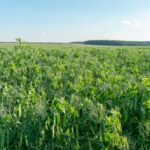Starting and managing a fruit orchard in South Africa can be a profitable and rewarding venture, given the country’s favorable climate and diverse growing regions. With the right planning, knowledge, and care, you can establish a successful orchard that yields high-quality fruit for both local and international markets. This article outlines the steps involved in starting and managing a fruit orchard in South Africa.
1. Choosing the Right Fruit for Your Orchard
The first step in starting a fruit orchard is selecting the right type of fruit for your climate, soil, and market demand. South Africa offers a variety of climates, from Mediterranean to subtropical, which means there are a wide range of fruits that can thrive in different regions.
Popular Fruit Choices:
- Citrus (Oranges, Lemons, Limes): South Africa is a major exporter of citrus fruit, and regions such as Limpopo, the Eastern Cape, and the Western Cape offer ideal conditions for citrus production.
- Apples and Pears: The Western Cape, especially the Ceres Valley, is famous for its apple and pear orchards. These fruits thrive in cooler, temperate climates.
- Avocados: Avocado production is growing rapidly in South Africa, with areas like Limpopo and Mpumalanga offering favorable conditions for these fruits.
- Table Grapes: The Northern and Western Cape regions are known for their high-quality table grapes.
- Stone Fruits (Peaches, Plums, Apricots): The warmer regions of the Western Cape and Northern provinces are ideal for growing stone fruits.
- Macadamia Nuts: As an emerging market crop, macadamia nuts are growing in popularity, particularly in Mpumalanga and Limpopo.
Factors to Consider:
- Climate Compatibility: Ensure the fruit variety is suitable for the local climate, whether it’s temperate, subtropical, or Mediterranean.
- Market Demand: Research the market demand for the fruit you choose, both domestically and for export.
- Water Requirements: Different fruits have varying water needs, so assess your water availability and irrigation options.
2. Site Selection and Soil Preparation
Choosing the right site for your orchard is crucial for the success of your venture. The location should provide the ideal climate, access to water, and good soil quality. Conducting soil tests and preparing the land properly will give your fruit trees the best start.
Site Considerations:
- Topography: Choose land with good drainage and gentle slopes to prevent waterlogging. Avoid low-lying areas where frost may be a problem.
- Soil Type: Fruit trees generally prefer well-drained soils with good organic matter. Conduct soil testing to assess pH, nutrient levels, and any potential soil imbalances.
- Water Availability: A reliable and consistent water supply is essential for an orchard, particularly during dry spells. Consider installing an efficient irrigation system such as drip irrigation to minimize water waste.
Soil Preparation:
- Clear the Land: Remove any weeds, debris, or old vegetation from the site. You may need to till the soil to break up compacted areas and improve aeration.
- Add Organic Matter: Incorporate compost or well-rotted manure into the soil to improve fertility and structure.
- pH Adjustment: Most fruit trees prefer a slightly acidic soil (pH 6-6.5). If necessary, adjust the soil pH using lime to raise it or sulfur to lower it.
3. Planting the Orchard
Once the site is ready, it’s time to plant your trees. Planting should be done at the right time of year, typically in the early spring or autumn, depending on the fruit type.
Steps for Planting:
- Spacing: Proper spacing is crucial to ensure each tree has enough room to grow and receive adequate sunlight and nutrients. Typically, fruit trees should be spaced between 3-6 meters apart, depending on the variety.
- Digging Holes: Dig planting holes that are wide and deep enough to accommodate the root ball of each tree. The hole should be twice the size of the root system to allow for healthy root growth.
- Planting Depth: Place the tree in the hole so that the root crown is level with the surrounding soil. Avoid planting too deep, as this can lead to root rot and other issues.
- Watering: Water the trees immediately after planting to settle the soil and eliminate air pockets around the roots.
4. Irrigation and Fertilization
Proper irrigation and fertilization are vital for the growth and productivity of your fruit orchard. South Africa has regions with variable rainfall, so irrigation systems are often essential.
Irrigation:
- Drip Irrigation: This system delivers water directly to the roots of each tree, minimizing water waste and ensuring consistent moisture.
- Sprinkler Systems: While less water-efficient than drip irrigation, sprinklers can be used in orchards with larger areas or irregular layouts.
- Water Management: Monitor soil moisture regularly and adjust watering schedules to prevent over or under-watering.
Fertilization:
- Nutrient Requirements: Fruit trees need a balanced supply of nutrients, including nitrogen (N), phosphorus (P), and potassium (K), as well as micronutrients like calcium and magnesium.
- Organic Fertilizers: Use organic fertilizers such as compost or well-rotted manure to improve soil health.
- Fertigation: Incorporating fertilizers into the irrigation system can ensure that the trees receive nutrients directly at their roots.
5. Pest and Disease Management
An integrated pest management (IPM) approach is key to controlling pests and diseases without relying solely on chemicals. Regular monitoring and preventative measures are essential.
Common Pests and Diseases:
- Citrus Greening: A bacterial disease that affects citrus trees, leading to reduced fruit quality.
- Fruit Fly: A significant pest for fruit orchards, particularly citrus and stone fruits.
- Powdery Mildew and Fungal Diseases: These can affect a range of fruit crops, causing leaf spots and fruit rot.
Management Techniques:
- Cultural Practices: Use crop rotation, proper spacing, and pruning to improve airflow and reduce pest habitat.
- Biological Control: Introduce natural predators such as beneficial insects to control pest populations.
- Chemical Control: Use pesticides judiciously and at the right time to minimize harm to beneficial insects and the environment.
6. Pruning and Training the Trees
Pruning is necessary for shaping the trees, improving air circulation, and promoting healthy fruit production. Each fruit type has different pruning needs, but in general, you should remove dead, diseased, or damaged wood, and thin the canopy to allow light penetration.
Pruning Tips:
- Early Years: Prune young trees to develop a strong structure and encourage branching.
- Mature Trees: Prune older trees to maintain size, remove suckers, and improve fruit production.
7. Harvesting and Post-Harvest Management
Harvesting fruit at the right time is crucial for ensuring that the fruit is of the best quality. Overripe or underripe fruit can impact market value.
Harvesting Tips:
- Timing: Harvest fruits when they have reached their full color, size, and taste, but before they become overripe.
- Careful Handling: Use gentle techniques to avoid bruising or damaging the fruit.
- Storage: Store harvested fruit in cool, dry conditions to preserve freshness and reduce spoilage. Depending on the fruit type, you may need to employ refrigeration or controlled atmosphere storage.
8. Marketing and Selling Your Fruit
After harvest, the final step is to market your fruit. South Africa’s fruit industry is highly competitive, with both local and export markets. Consider the following options:
- Local Farmers’ Markets: These are great for selling fresh, locally grown produce directly to consumers.
- Wholesale Markets: Larger-scale operations can supply fruit to supermarkets, grocery stores, and wholesalers.
- Export Markets: South Africa has strong export opportunities for citrus, grapes, apples, and other fruits, especially to countries in Europe, the Middle East, and Asia.
Starting and managing a fruit orchard in South Africa requires careful planning, knowledge of the local climate, and effective management practices. By selecting the right fruit varieties, preparing the land, implementing proper irrigation and fertilization, and using sustainable pest management techniques, you can build a successful and profitable orchard. With the right approach, your orchard can yield high-quality fruit for both local consumption and international markets, ensuring long-term sustainability and profitability in the growing South African fruit industry.
Join 'Farmers Mag' WhatsApp Channel
Get the latest Farming news and tips delivered straight to your WhatsApp
CLICK HERE TO JOIN






